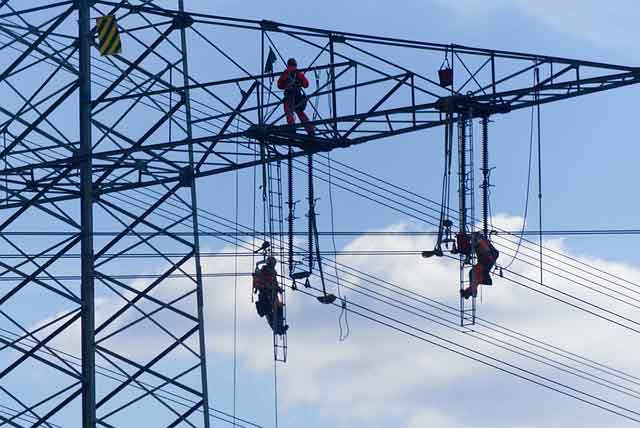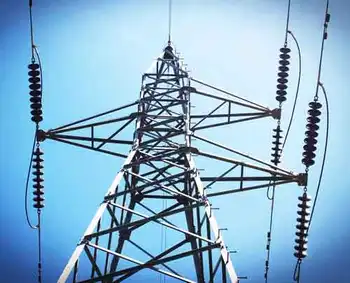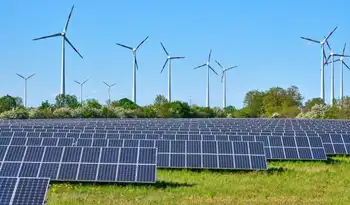Verdict due on nuclear waste site
KINCARDINE, ONTARIO - Kincardine townsfolk and politicians alike will find out February 16 what their fellow citizens think about building deep underground storage vaults for radioactive waste near the town.
A Toronto-based polling firm, The Strategic Counsel, has tried to ask all residents 18 and over whether they favour the proposed waste site. The results will be unveiled at an evening town council meeting. If more than 50 per cent of those polled favour the underground storage plan, the council is scheduled to vote tonight on a bylaw to push ahead with the regulatory process needed to get it approved.
The council has already voted in favour of the plan and drawn up an agreement that would see the storage facility's proponent, Ontario Power Generation Inc., pay $35.7 million over 30 years to Kincardine and four neighbouring municipalities.
Kincardine, which would get two-thirds of the money to use as it pleases, commissioned The Strategic Counsel to poll adult residents about the proposal. If more than half reject the plan, the town "will direct OPG to consider alternatives." If there's a tie vote, the issue would be referred to a council committee.
It's not a usual municipal process, Mayor Glenn Sutton said. "But it's not a usual municipal issue, like a sewer or water main," Sutton added.
Still, not everyone is pleased with it.
Jennifer Heisz, who thinks the facility could damage the environment and the health of residents, says she was never contacted by phone or mail, and says she knows others who were also missed.
Nor did the poll cover seasonal residents, who also have a vital interest, she said. "This can't even approach being credible."
Michael Sullivan, a partner with The Strategic Counsel, said the firm made every effort to reach all the town's more than 8,000 adults.
"We made at least 10 calls to each household" until there was a reply, and a toll-free number was also left for residents with an answering service, he said. The number of households reached closely matched Statistics Canada's data for households in the town, he added.
Whatever the result of the poll, Kincardine's response will be carefully studied as Ontario mulls the wisdom of spending billions of dollars over the next decade refurbishing its aging nuclear stations — or even building new reactors.
What to do with the radioactive waste produced by nuclear facilities, and finding a community willing to play host to it, are part of the puzzle of charting Ontario's nuclear future.
Kincardine is not a surprising choice as a possible site for a waste facility; it's been a nuclear town for 35 years. It's the biggest community in the neighbourhood of the Bruce nuclear station, operated by Bruce Power LP under lease from OPG.
But the area also has a considerable tourist trade and it sits on the edge of western Ontario's agricultural heartland.
The nuclear station lies 16 kilometres north of the town centre, but, after swallowing the adjacent township, Kincardine's boundaries now embrace the nuclear plant itself.
The Bruce site already stores low- and intermediate-level radioactive waste from reactors across the province in buildings and surface containers.
OPG plans to store the waste in underground caverns, carved out of limestone 660 metres below the earth's surface. They would hold low- and intermediate-level waste generated by all Ontario nuclear plants until 2034, when they would shut.
The site wouldn't hold spent fuel, the most dangerous waste produced by power reactors. Finding a home for spent fuel has been turned over to the federal Nuclear Waste Management Organization.
Low-level waste includes such things as clothing worn by people entering the reactor. Intermediate waste would include material used to filter air and water in the reactor core or worn metal parts that have become radioactive after years of exposure. They are "hot" enough that they must be encased in special containers to shield workers handling them from damaging radiation.
Even if the outcome is favourable, the underground storage site will take time to prepare. An environmental assessment is needed, followed by a licensing hearing before the Canadian Nuclear Safety Commission.
Construction is unlikely to start before 2013, with waste storage beginning about 2017. Until then, waste would continue to be stored on the surface.
OPG vice-president Ken Nash says there would be no crisis if Kincardine residents reject the proposal because the surface storage area still has capacity. "We could continue to accept waste for another 30 or 40 years without any problem."
The proposal was hatched because the town approached OPG several years ago to discuss long-term storage. That led to a memorandum of understanding in 2002, and an agreement including the payment schedule was reached last fall.
Proponents of underground storage say it's the safest long-term solution. The rock formation has been stable for millions of years and isn't exposed to the weather. At the same time, if problems develop, the vaults would remain accessible.
The agreement binds the town to continue supporting the underground storage area once it has been approved. One clause says OPG may "in its discretion" withhold payments to the town "should OPG determine Kincardine is not in good faith, exercising best efforts to support the receipt of the L&ILW" (low- and intermediate-level waste).
The unusual spectacle of a town offering itself as a long-term waste repository is being closely watched.
"The nuclear industry has always had a problem with waste disposal and finding a host community," said Tom Adams, executive director of Energy Probe and a foe of nuclear power. "If they can get a positive decision (in Kincardine), that's definitely to the credit of the industry."
Adams said that since the waste is coming from reactors all over Ontario, it isn't purely a local issue. People just outside Kincardine, and along transportation routes, also have an interest in the project. "Even if there is a positive decision, the waste issue hardly goes away. But it does get the industry to Square One," Adams added.
The issue will also be closely watched by the Ontario government, which needs to find new sources of electricity and is mulling whether to spend billions refurbishing old nuclear plants or building new ones.
But Murray Elston, president of the Canadian Nuclear Association, is unwilling to interpret Kincardine's choice as a barometer for the nuclear industry as a whole.
Elston said the issue doesn't go further than the "very specific option" of the underground storage proposal.
"Some people would say: `We've already got the surface storage and it's doing quite well, thank you'," he said. "The issue is: Do you think we should move to an (underground) repository site?"
Related News

Major U.S. utilities spending more on electricity delivery, less on power production
WASHINGTON - Over the past decade, major utilities in the United States have been spending more on delivering electricity to customers and less on producing that electricity.
After adjusting for inflation, major utilities spent 2.6 cents per kilowatthour (kWh) on electricity delivery in 2010, using 2020 dollars. In comparison, spending on delivery was 65% higher in 2020 at 4.3 cents/kWh. Conversely, utility spending on power production decreased from 6.8 cents/kWh in 2010 (using 2020 dollars) to 4.6 cents/kWh in 2020.
Utility spending on electricity delivery includes the money spent to build, operate, and maintain the electric wires, poles, towers, and meters that…




